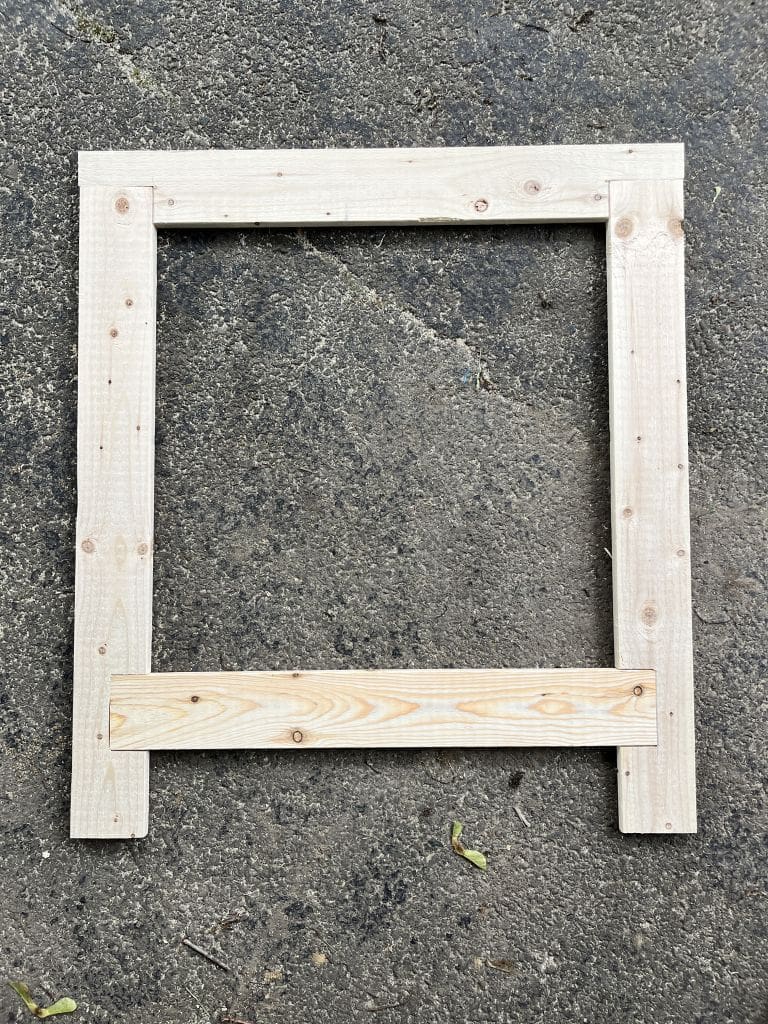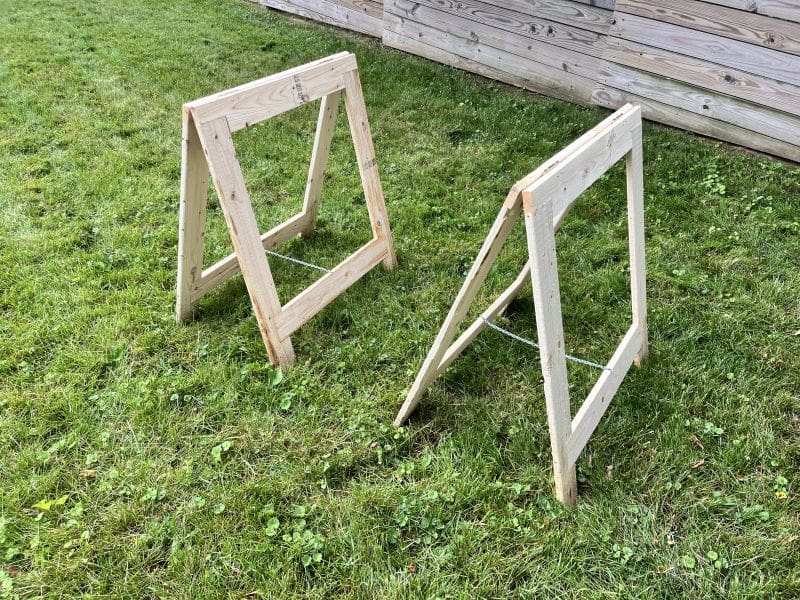A foldable sawhorse is essential to our remodeling business. Since we need sawhorses nearly every day, and we don’t want heavy sawhorses to move from home to home working on remodeling projects for our clients. So we prefer a lightweight sawhorse that helps make our efforts more efficient. So here’s what you need to know to build folding sawhorses that’s aren’t expensive and will be sturdy enough to handle your power tools and projects.
What’s in this folding sawhorse article?
- Why do we need custom folding sawhorses?
- What makes up the sawhorses?
- How are these super lightweight?
- What inspired these folding sawhorses?
- What's the foldable sawhorse design?
- How to build this lightweight sawhorse?
Why do we need custom folding sawhorses?
Store-bought folding sawhorses, plastic or steel, are fine and affordable. I’ve owned many factory-made foldable sawhorses over the years and some are durable and decent. However, they all have their own issues of being clunky, difficult-ish to store on a work truck, requiring multiple steps to deploy and un-deploy.
As a carpenter, I like to make carts, work tables, and folding sawhorses out of wood so I can customize the size and shape to our specific needs. Once you start making these kinds of job site helpers to suit your projects, you may start seeing more opportunities to customize these parts of your work, too. And you’ll gain the joy and satisfaction of a completed project that you can use in all of your other home improvement projects.
What makes up the sawhorses?
It takes a few power tools and some specific supplies to build these lightweight, strong, super-easy to deploy sawhorses.
- Furring strips, what we New Englanders call “strapping”
- Stepped joints and notches
- 5-inch Spax trim-drive screws
- Hinges
- Sash chain
How are these super lightweight?
Strapping (furring strips) is typically spruce. It’s super light, super cheap but has awesomeness in its xylem and phloem. Meant to be buried in a wall or ceiling like wood lath under plaster, the hero function of this stuff is NOT to have stuff made out of it, but for it to be part of stuff that is made.
Challenge accepted. Also, idea totally stolen. Adapted, for sure, but stolen, completely.
What inspired these folding sawhorses?
NBC made a show called Spartan Race, which is an obstacle course race that I have run 11 times, and a friend of mine from ‘Extreme Makeover: Home Edition‘ asked me to help build the sets on location in Georgia.
The backstory is that Georgia was the U.S. epicenter for major film production, Marvel and the like, and so they have a Union there that builds what needs building and I got to work with these guys. There are a lot of stories there, and precious few shirtsleeves among them, but talent…holy hell.
So anyway, what I call “strapping” they call “1-by” and they make everything they can out of it, including hundreds of sawhorses used to bring the shows you love to watch alive. It’s also called furring strips by some carpenters, too.
What’s the foldable sawhorse design?
The lightweight sawhorse design is as simple as it is ingenious. Much like my Carpenter Cart, it’s 4-pieces of wood joined together with a few extra parts. But there’s a hitch bringing it from TV world to our world.
To mend or fasten “1-by” together requires a wide-crown stapler. This monster shoots a 2-inch wide by ½-inch deep staple. It’s awesome, but I’m not buying one. So I had to go my own way because the horses these guys made are–for most applications–bombproof.

How to build this lightweight sawhorse?
My prototypes had by-3 strapping and they all worked, but they weren’t quite elegant enough. They were all butt joints I didn’t even pre-dill. The set that lasted a year–and still had some time to go–worked on my jobsites, but not well enough to share with you.
I think this design that overcomes the missing 2-inch crown stapler gets me where I need to go. Plus, it’s fun to make. It’ll cost at least what you’ll pay for plastic, but when you’re done, it’s yours. And isn’t that the point?
Check out the video to watch the steps to building these folding sawhorses
Watch our video to see all of the steps to building foldable sawhorses that are lightweight and easy to store.


